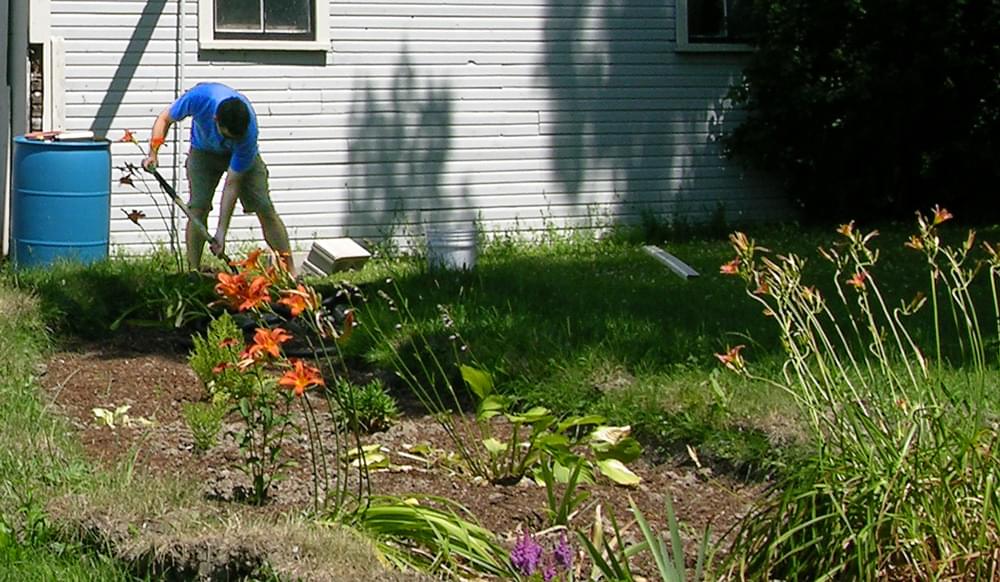Get Involved
Save the Lake Tips

Phosphorus Pollution Reduction Tips
- Use conservation practices on agricultural lands.
- Install a rain barrel and/or plant a rain garden.
- Plant native trees and vegetation along shorelines and river banks to help hold soil in place and reduce erosion.
- Properly maintain your septic system, especially by pumping every few years.
- Wash your car with non-phosphorus and biodegradable soap on your lawn rather than on your driveway so that excess water and detergents can soak into the grass.
- Test your lawn and garden soil before fertilizing. Laws in New York and Vermont prohibit the use of phosphorus fertilizers. Learn more about P-free fertilizers on the Lawn to Lake website.
- Do not rake your yard waste into nearby streams, lakes or stormwater gutters. Leave grass clippings as mulch on your lawn.
Human Health/Toxic Substance Pollution Prevention Tips
- Properly maintain your septic system, especially by pumping it out every few years.
- Pick up and dispose of pet waste in the garbage.
- Do not dump sewage from your boat or home directly into the Lake.
- Eliminate or reduce the application of pesticides on your lawn and garden.
- Keep cars and boats in good working order to eliminate oil and fluid leaks.
- Do not pour chemicals or motor oil down storm drains or into your septic system.
- Upgrade to a more environmentally-friendly outboard motor. New 4-stroke and direct fuel injection motors pollute less.
- Walk or ride a bicycle rather than driving an automobile.
- Use environmentally sound cleaning products, such as baking soda, vinegar, and lemon juice to in and around your home.
- Do not top off your gas tank when refueling your automobile.
- Do not use anti-freeze or other chemicals to keep ice fishing holes open.
- Recycle batteries and fluorescent light bulbs.
- Do not flush medications and pharmaceuticals down the toilet. They should be discarded in the trash, or brought to a pharmacy drop-off location.
- Properly dispose of mercury-bearing items, including non-digital thermometers and thermostats, and compact fluorescent light bulbs (CFLs).
- Learn how to properly dispose of all wastes on the CSWD website.
Fish and Wildlife Protection Tips
- Keep domestic animals out of sensitive habitats such as alpine areas and bogs.
- Fence livestock out of riparian zones.
- Use measures such as streambank fencing, constructed wetlands and buffer strips to control nonpoint source pollution that causes habitat degradation.
- Use landscaping practices that benefit living natural resources and their habitats.
- Help limit the spread of water chestnut, zebra mussels, purple loosestrife and other nuisance nonnative species that can have negative effects on native fish and wildlife species and their habitats.
- Work with federal and state agencies and nonprofit organizations to protect fish and wildlife habitat through conservation easements and habitat protection and restoration programs.
- Learn to identify plant and animal species in the Basin to help researchers and managers better understand the distribution of these species in the Basin.
- Become more aware of the presence of wetlands in your community and educate yourself and others about wetlands and why they should be protected.
Nuisance Aquatic Plant and Animal Prevention Tips
- Inspect your boat, trailer, and equipment, and remove any mud and plants before leaving any body of water.
- Drain all water from the boat, including the bilge, live well, and engine cooling system.
- Dry the boat and trailer in the sun for at least five days, or if you use your boat sooner, rinse off the boat, trailer, anchor, anchor line, bumpers, engine, etc. with hot water or at a car wash.
- Leave live aquatic bait and bait used in infested waters behind- either give it to someone using the same water body, or discard it in the trash.
- When recreating in areas infested with Eurasian watermilfoil, be careful not to break apart the plant since milfoil spreads by plant fragments.
- Contact the Vermont Department of Environmental Conservation, the Lake Champlain Basin Program, and the New York Department of Environmental Conservation to find out how to become involved in monitoring and outreach activities to help prevent the spread of nuisance nonnative aquatic species in the Lake Champlain Basin.